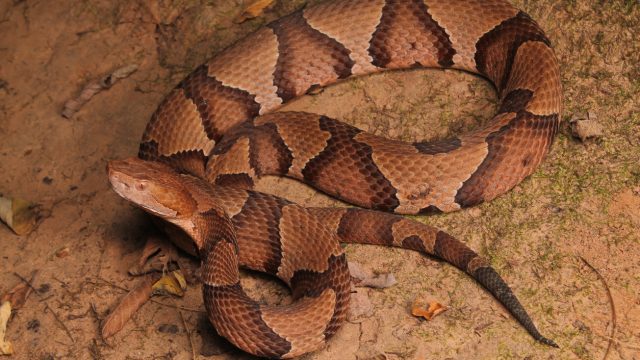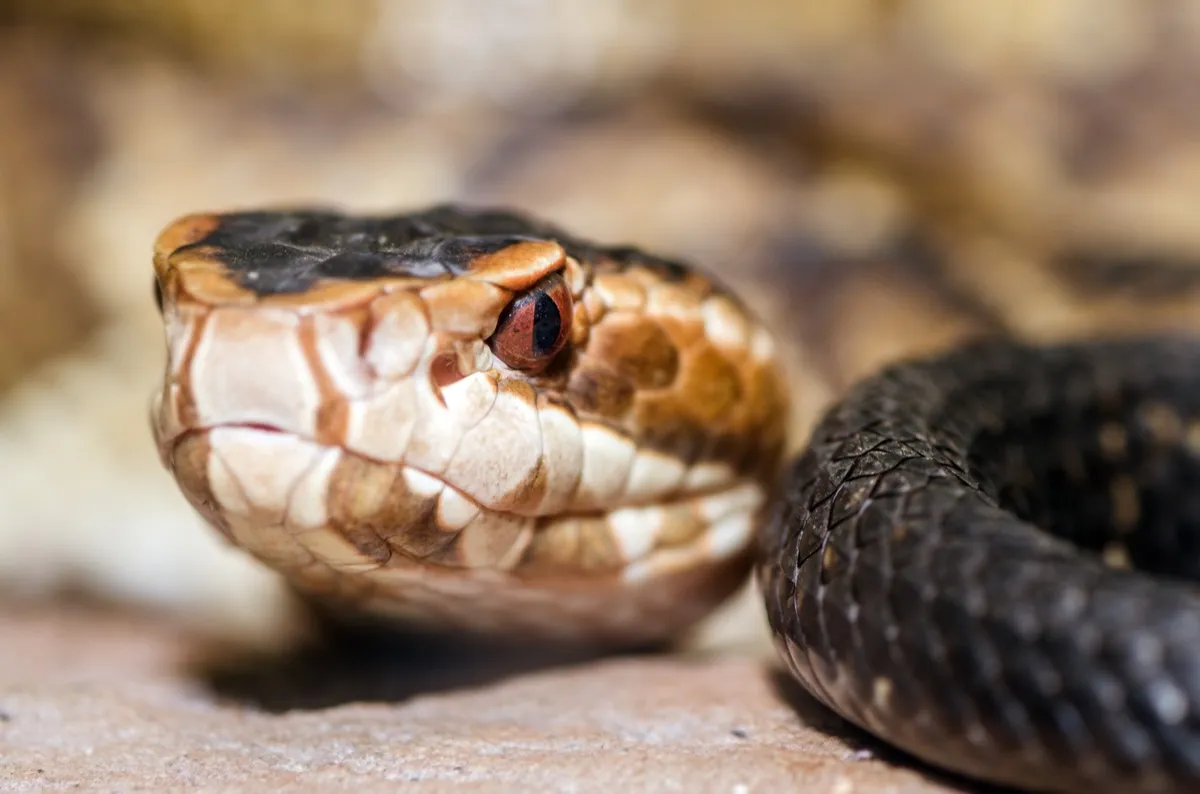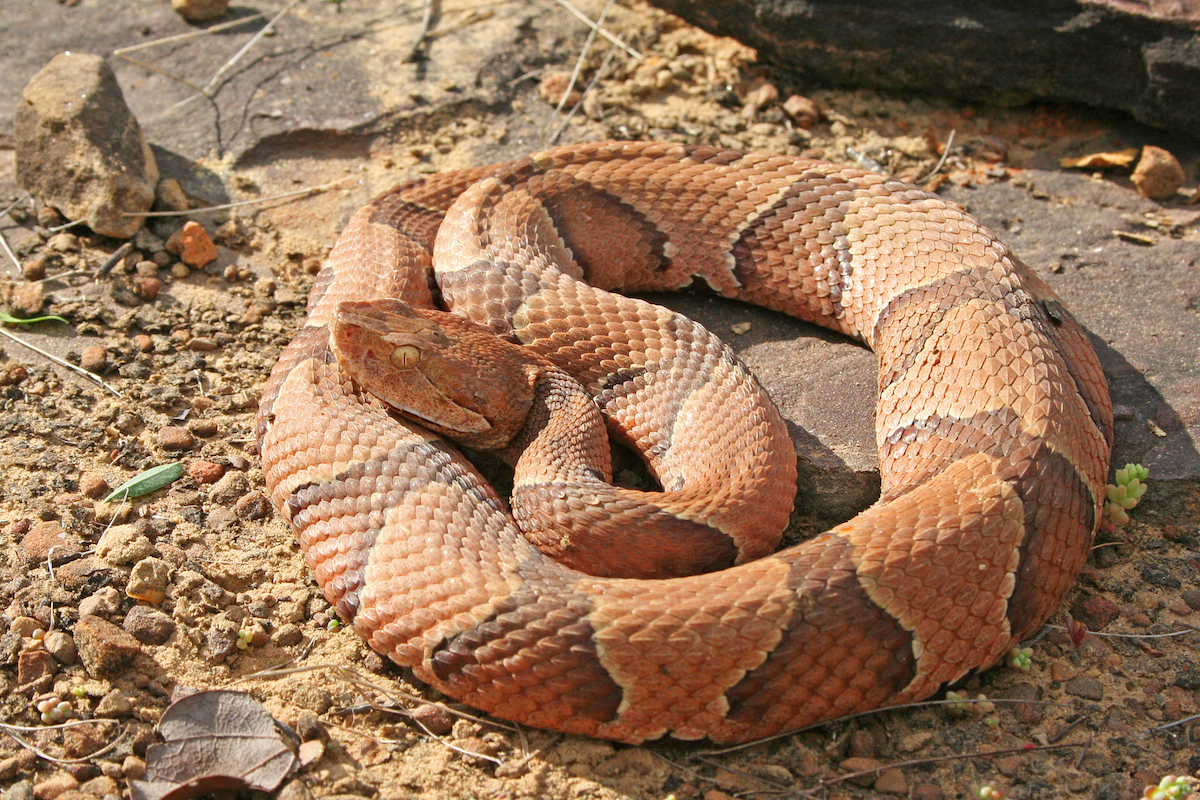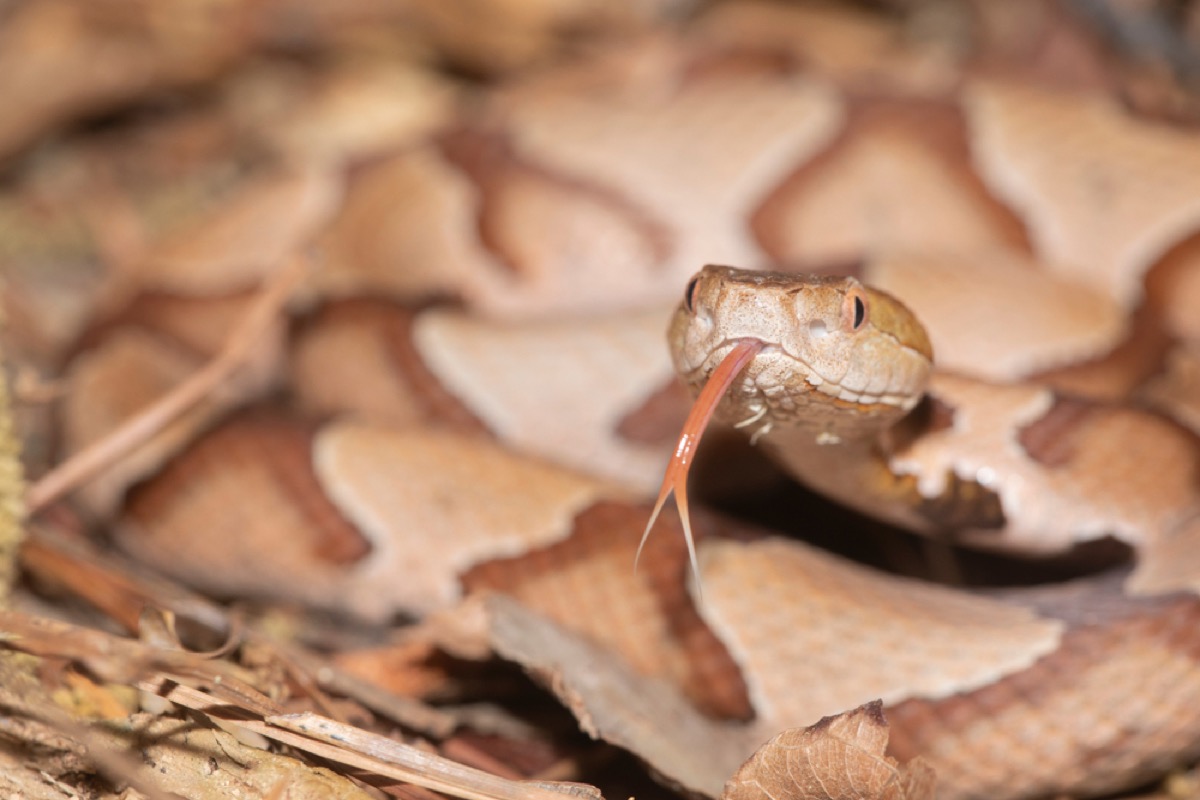These Venomous Snakes Are on the Rise—Here’s How to “Steer Clear,” Expert Says

It’s a simple fact of nature that no matter where you live in the U.S., you likely share a habitat with at least one type of venomous snake. Fortunately, the misunderstood reptiles are also relatively timid by nature and will do their best to stay out of your way by hiding. But whether it’s unexpectedly coming across one on the hiking trail or accidentally disturbing one in your yard, some encounters with them are practically inevitable, especially during the time of year when they become more active. And if you’re looking to keep your distance from certain venomous snakes whose numbers are on the rise, there are a few things you should remember. Read on to see what experts say is the best way to “steer clear” of unwanted reptile run-ins.
READ THIS NEXT: The First Place You Should Check for a Snake in Your Home, Experts Say.
Poisonous snake bites remain relatively rare and are seldom fatal.

Whether you have a fear of snakes or not, being bitten by a venomous reptile is arguably one of the last things anyone would like to experience. But fortunately, data shows that it’s still pretty unlikely you’ll end up having that kind of encounter.
According to the Centers for Disease Control and Prevention (CDC), there are roughly 7,000 to 8,000 venomous snake bites each year in the U.S. Of these, only about five on average result in death—which the agency says “would be much higher if people did not seek medical care.”
However, there are certain times of the year when you might be more likely to come across one. “Snakes are cold-blooded, meaning that they rely on external sources, such as the sun, for a large chunk of their warmth and energy,” Stewart Flynn of Bug-N-A-Rug Exterminators previously told Best Life. “That means that they can often be found laying in the sun to soak up the heat.”
Now, experts are warning that sightings of one type of venomous snake will rise in some areas as the weather changes.
You might be more likely to see one type of venomous snake right now.

As the seasons shift from the high daytime temperatures of summer to the milder weather of fall, many people like to take advantage of the more comfortable climate with outdoor activities. Others keep themselves busy with seasonal yard work like raking leaves. But reptiles are also affected by the change in temperature—including venomous copperhead snakes, which go from being mainly nocturnal to hunting during the day as the sun’s rays grow more tolerable, Francis Skalicky, a spokesperson for the Missouri Department of Conservation, tells local NBC affiliate KY3.
And it’s not just the changing temperatures that make you more likely to see a snake. Skalicky says baby copperheads that were born over the summer are also now old enough to go out and hunt independently, meaning there are more of the reptiles out and about than in previous weeks. Because of this, he suggests staying alert while taking a walk or hiking.
“When you’re walking over rocks, when you’re walking over logs, when you’re walking by rocks, just keep an eye out for them. If you see them, steer clear of them. They won’t come after you. The bites that occur are when copperheads get startled, and it’s a defensive measure,” he told local KY3.
RELATED: For more up-to-date information, sign up for our daily newsletter.
Experts say there are a few ways to avoid an accidental encounter.

Staying alert for any potential risks while in nature is always a good idea. But thanks to copperheads’ namesake coloring and the triangular pattern along their bodies, they’re often incredibly well camouflaged among leaves or brush, making it particularly hard to spot them. Because of this, Skalicky advises also carrying a walking stick with you to increase vibrations as you move about, so the reptiles know you’re approaching and you don’t take one by surprise.
However, if you’re walking with a canine companion, you may need to be extra careful. “Be an extra set of eyes for your dog. If your dog is barking around a snake or something like that, get the dog away from the snake. It’s the same with humans. The snake wants to get away. The dog is annoying it, and it wants to go away. If you get the dog away, the snake will crawl away, and everything will be fine,” Skalicky said.
Copperhead snakes can still provide plenty of benefits around your home if you’re careful not to disturb them.

Even if you’ve never seen one, copperhead snakes can be found in large swaths of the U.S. Their habitat spans “from southern New England to West Texas and northern Mexico,” Jeff Beane, collections manager of amphibians and reptiles at the North Carolina Museum of Natural Sciences, tells LiveScience. But while their bite can be painful and “often results in temporary tissue damage in the immediate area” of the injury, he says that they are “very rarely (almost never) fatal to humans.” Nevertheless, he still suggests that anyone who is bitten should seek medical attention immediately.
Despite their reputations, the snakes will do everything they can to avoid confrontation. “If you encounter them and they’re coiled up somewhere where they want to be, they’ll remain completely still and hope that you don’t see them or bother them… If you do disturb them, the first thing they’ll probably do is try to get away. If you move them… they’re going to try to get back to something that’s familiar,” Beane told Blue Ridge Public Radio in a 2018 interview.
And so long as you’re aware of the threat and they pose no potential risk to children or pets, copperhead snakes can actually provide some benefits. “They eat a lot of species that we don’t like, like mice and rats, that can cause diseases and problems. And [by] eating a lot of rodents, snakes are swallowing a lot of ticks. And ticks cause things like Rocky Mountain spotted fever and Lyme disease. One study showed that snakes are significant tick destroyers in Eastern forest sites.”